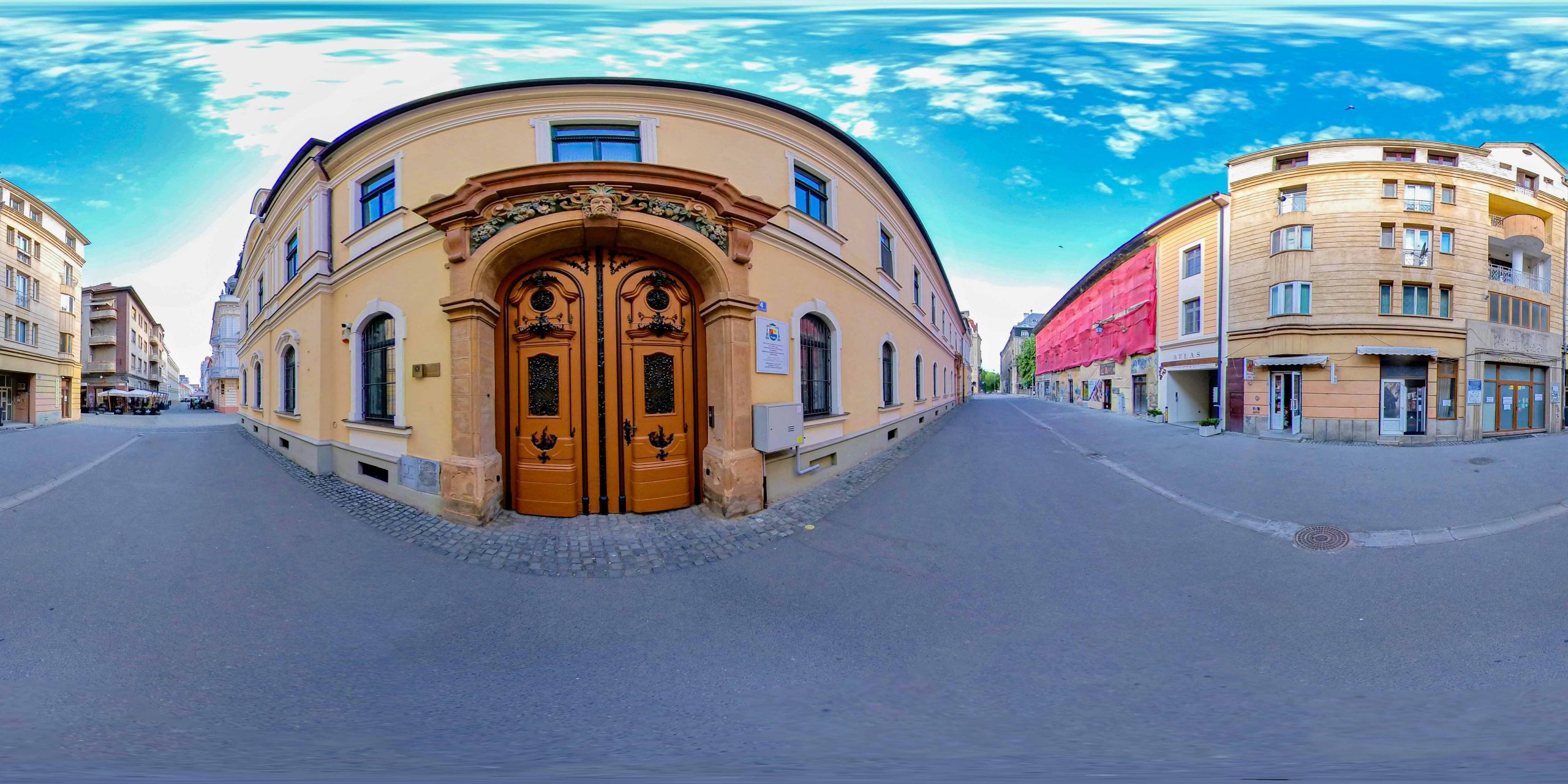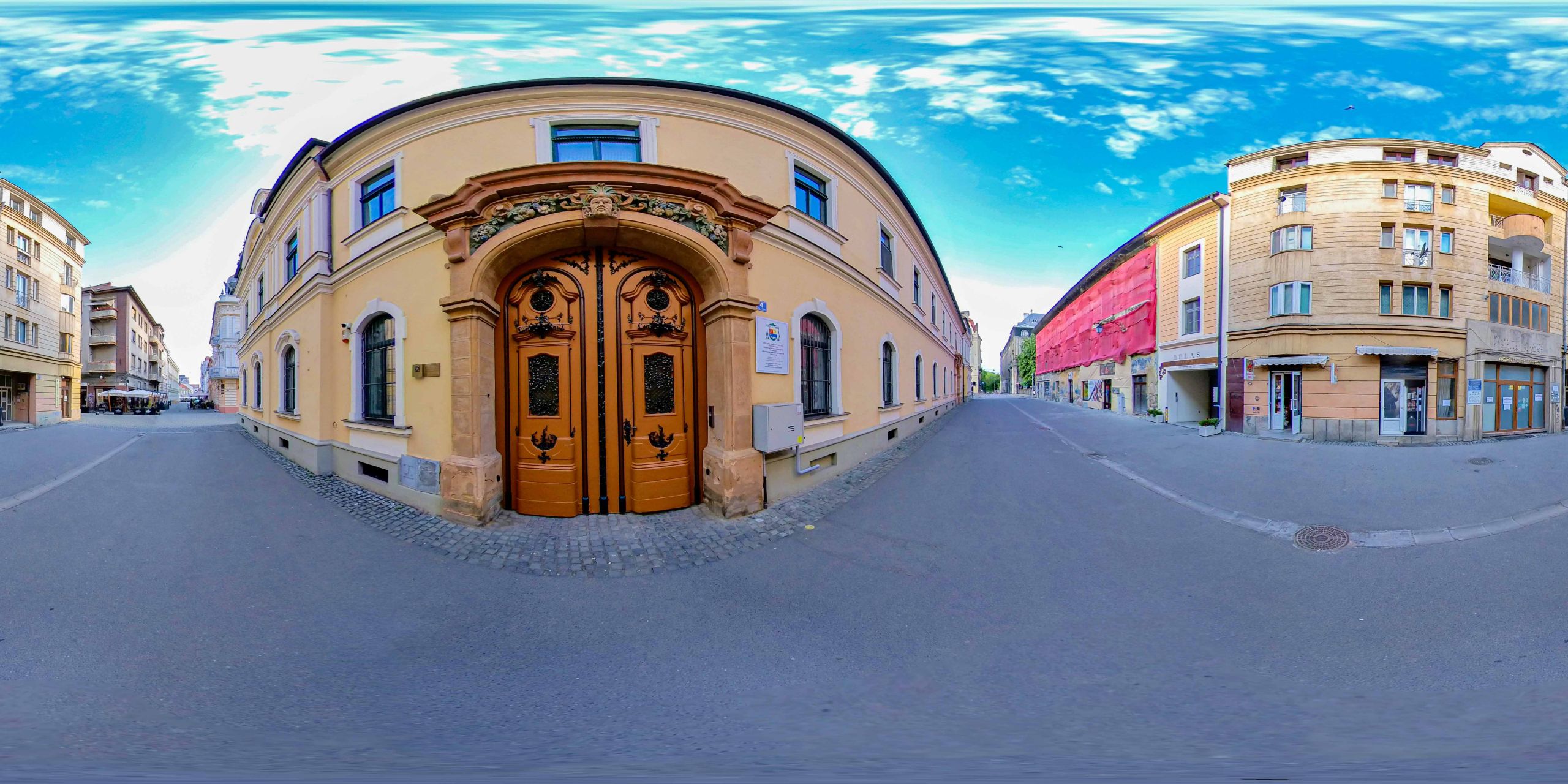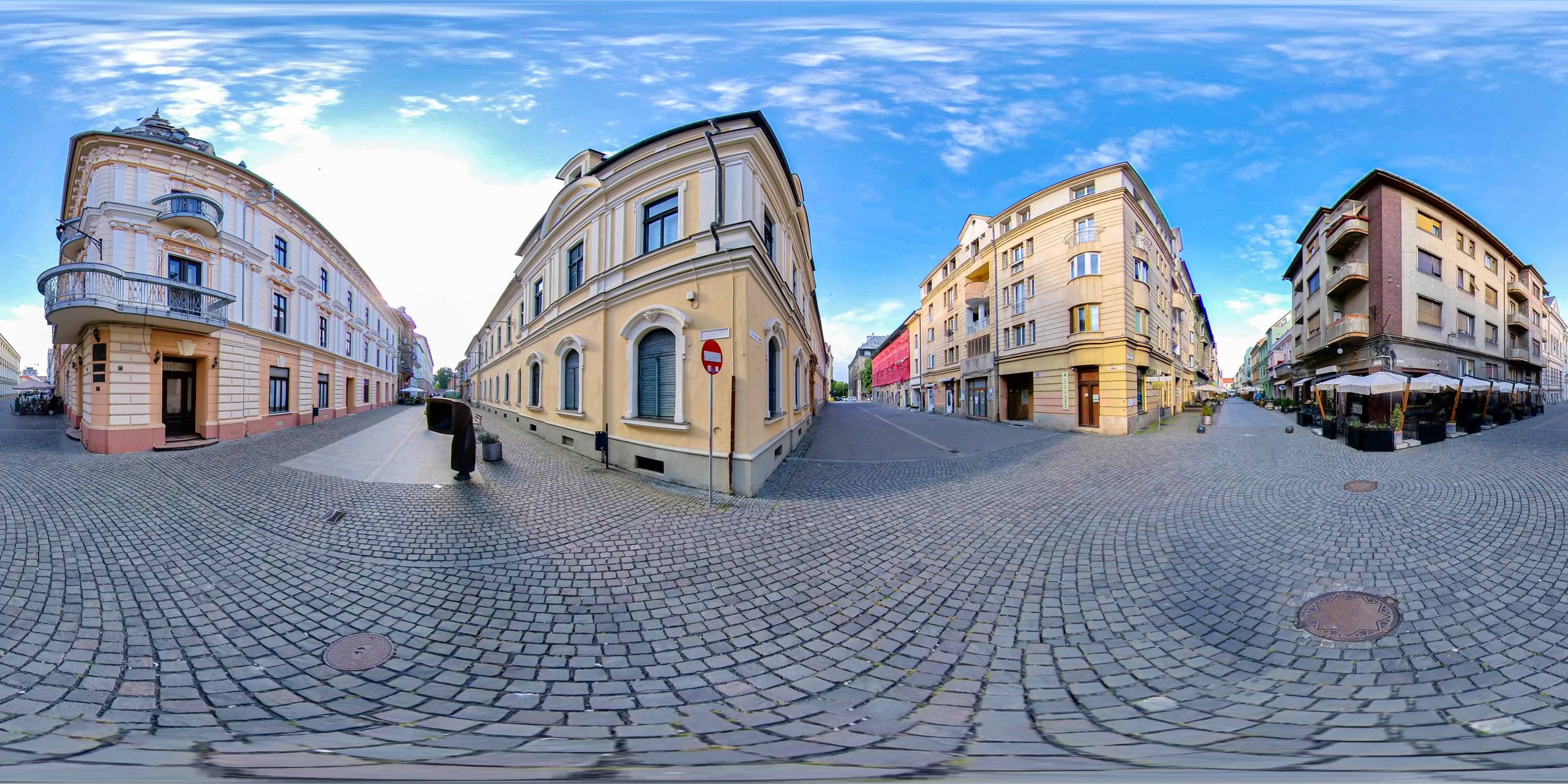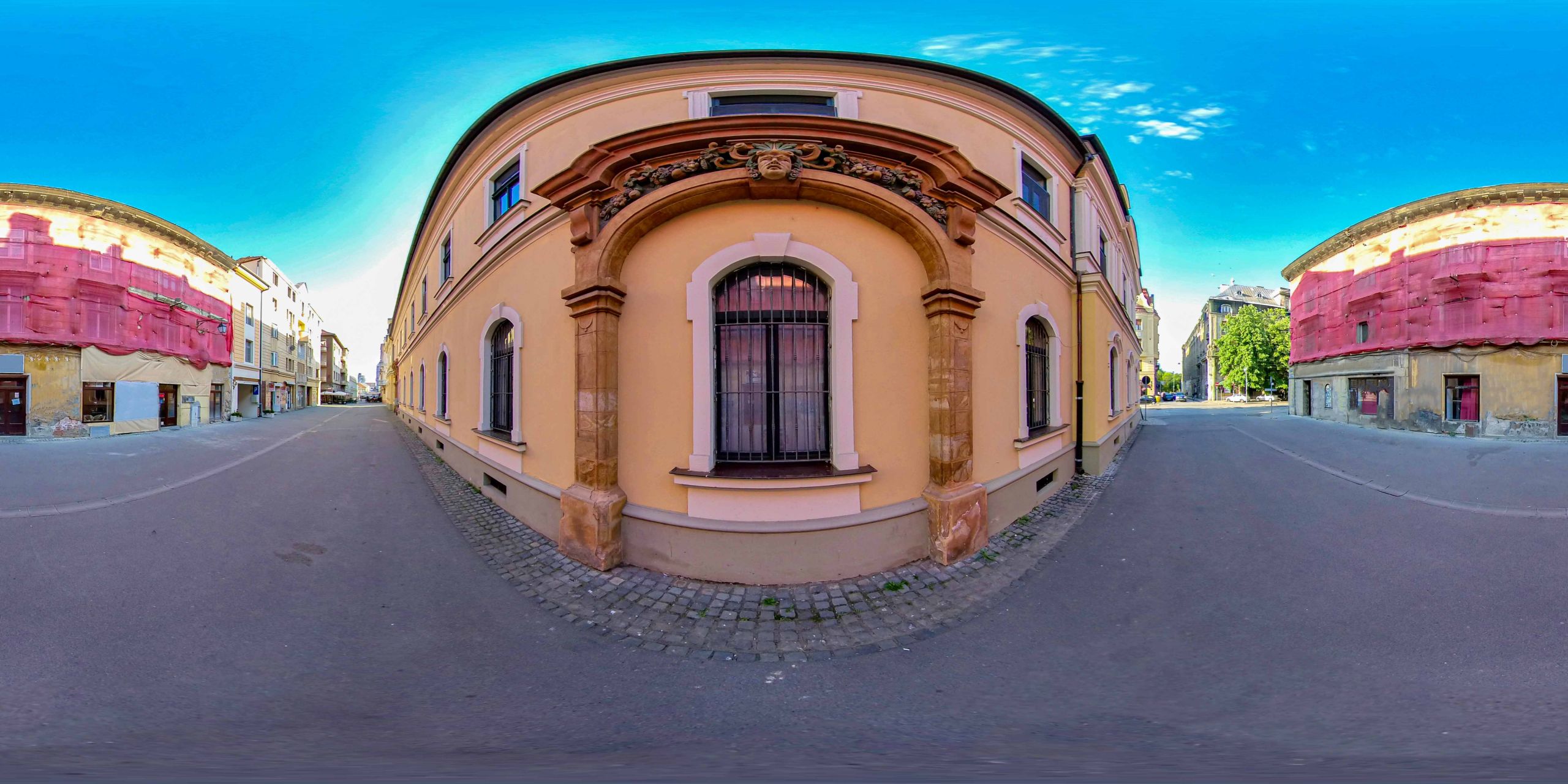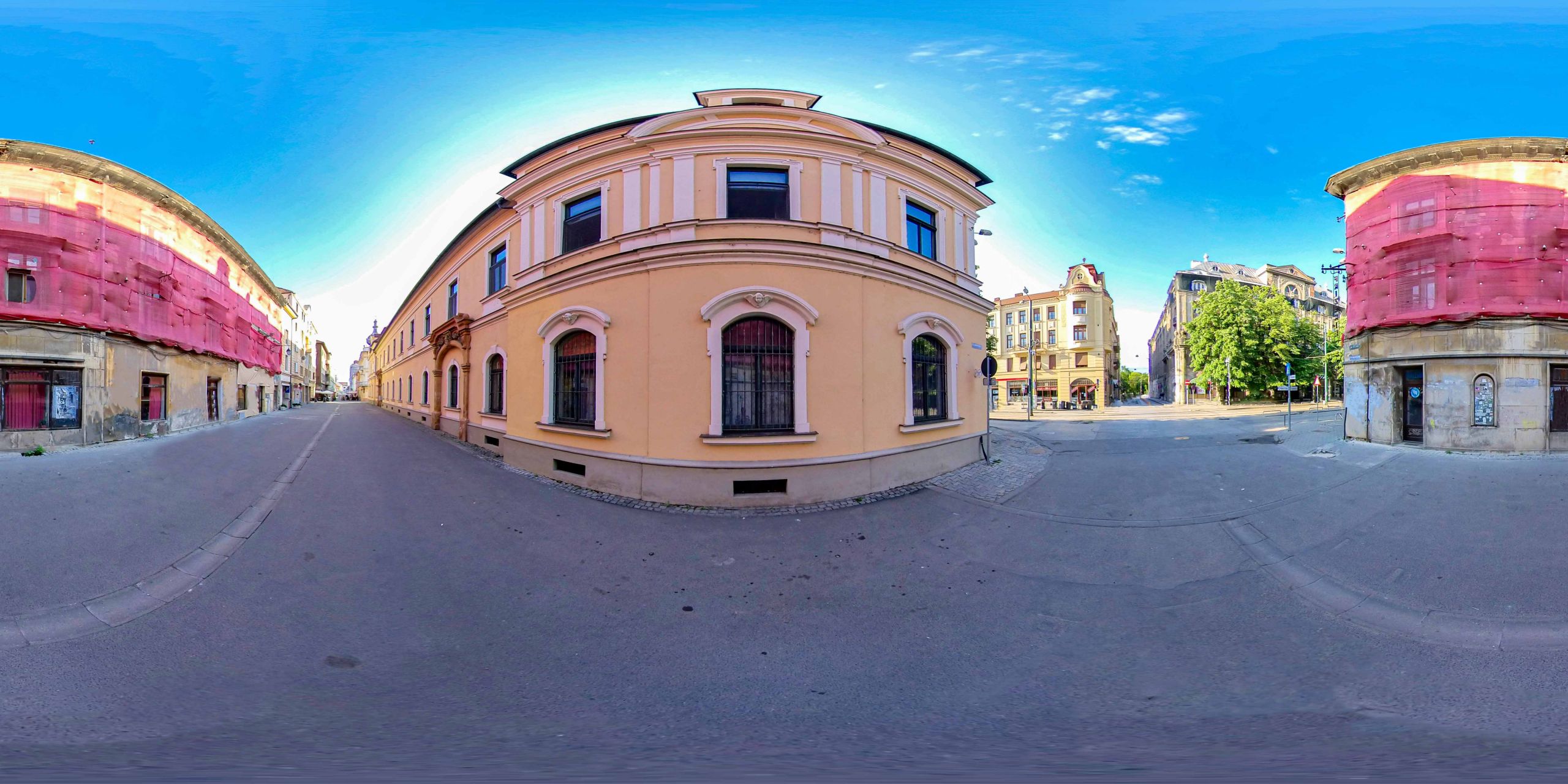The current building of the Episcopal Palace was built by the Austrian authorities in 1723, being intended from the beginning for the purpose of functioning as an episcopal palace, even if for a long time it housed other institutions.
Listen to the audio version.
The current building Episcopal Palace was built by the Austrian authorities in 1723. Although it seems that it was intended from the beginning to function as an episcopal palace, the building housed other institutions for a long time. In 1780, part of the building was donated to the Episcopate, and the other part to the Cathedral Chapter, an ancient episcopal office consisting of high-ranking clerics, who assisted the bishop in leading the diocese. In 1889, during the reign of Bishop Alexander Dessewffy of Csernek et Tarkeő, a major overhaul took place, which cost 420,000 florins. This is how the building got its current appearance. In 1891, on September 16, while visiting Timisoara, Emperor Franz Josef I was hosted in this building.
Until the summer of 1950, an episcopal chapel with a wooden altar was kept upstairs, as Bishop Joseph Lonovics of Krivina received it as a gift from the Austrian Chancellor Klemens von Metternich. In 1950, the building was confiscated, and the chapel, the other rooms, the library, and the archive were severely damaged or even fully destroyed. The episcopal palace was restored in 1951, by the court decision, but it was abolished and reduced to the rank of a deanery by the communists. During that period, the building housed apartments distributed to various people, the ones loyal to the communist regime were upstairs, and on the ground floor, there were various shops.
During the years 1994-1996, the building was subjected to an extensive process of restoration and renovation, trying to restore it, in the most faithful conditions, to the stage before 1950. With the completion of this restoration, the halls, administrative offices, apartments, the chapel, the library, and the archive found their place in the episcopal palace. On the ground floor, in a wing of the Palace, the Collection of religious art of the Roman Catholic Diocese of Timişoara was arranged.
Bibliography:
- Matei Barbu, Timișoara: churches and temples, ArtPress Publishing House, Timisoara, 2012.
The Roman-Catholic Episcopacy Palace
Listen to the audio version.
“I walk back home making a detour along the Bega river, on the alleys, my eyes lingering on Hunyadi’s red castle, hemmed in by white crenels. The sunset lights up its windows set deep under the vaults and examines the cornered watchtower, over which wander feudal memories and lean royal shadows: Charles Robert, Ion Corvin, Matei Corvin.
Timişoara, a halt for delights and rest, a theater of crown dramas, a brilliant county seat, a shelter afflicted by bloody plagues, turned into a place of oriental filth at the time when Islam called from the minarets, for more than a hundred years, the beleivers who had flooded all the fields of Banat. You can find the Timişoara of all memories if you take a stroll around the calm streets that lead from Hunyadi’s red castle, going past the Banat garrison and the old stone houses, to the ruins of the citadel gates. You can still see the building that housed Eugene of Savoy, the one who freed Timişoara from the Turks. But I don’t want to hear the stories of the ruins tonight. The full moon beats down on the banks of the Bega and the terraces and gardens burst with light in the dark. ” (Cora Irineu, Letters from Banat, Published and Printed by Cultura Națională, Bucharest, 1924, p. 38-39)
The witch
by Cătălina Andreas, class VIII
"Grigore Moisil" Theoretical High School Timișoara
Long ago, in long forgotten times, there lived an evil witch.
She reigned in the Mystic Realm and lived in a stately stone castle, with large crystal windows painted by the most skilled painters in the realm, solid wooden doors with carefully carved flowers and patterns, and huge rooms decorated with pictures painted in the most unique colors. Her name was Rebecca, after her grandmother, who had died in battle with the dragons, the first female soldier.
As a young child, Rebecca was unfortunately abandoned by her mother, Victoria, as she didn't have enough money to care for them both. She was fortunate that when a storm came over the forest, a man and woman found her and took her into their home. She grew up, her mother died leaving her with an alcoholic father who was afraid of her magical powers. Her father kicked her out of the house at some point, so she ran back into the forest and hid there for three years where she lived off the scraps of the villagers. It was rumored in the village that there was a sorcerer who could grant anyone's wishes, and this rumor reached Rebecca's ears. The girl went into the middle of the forest, where there was a well, and said her name thirteen times. Suddenly, the water began to boil and purple smoke came out of the well, which evaporated into the air, revealing the sorcerer. She expressed her desire to become queen of the Mystic Realm, to take revenge on all the people who, she said, had rejected her. The sorcerer explained to Rebecca that she could only become queen if she killed the King with his knife. Done and done, the next night the girl stood outside the King's castle, ready to steal his knife. She climbed up the wall with the help of special equipment made by dwarves and entered the castle. The first room, the ballroom, had red velvet curtains and a stone floor. How he longed to stay there... He passed it and started down the stairs to the prison. He bewitched the guards, who had fallen into a deep sleep, so he easily reached the place where the King kept his knife. He picked it up and, seemingly far too easily, floated to the room where the King slept, raised the knife above him and stabbed him three times. After that, everyone in the realm began to obey him. Seeing how much power she had, Rebecca began to abuse it. She killed innocent people, caught them talking about her, and without explanation, tortured and beheaded them. Others had their brains and hearts cut out and crushed between her palms.
One day, when he was trying to kill a man, it struck him that there was something special in the man's eyes. She took pity on him and let him escape. She hired him as a servant, and in time fell in love with him. They got engaged, but it didn't last long because Rebecca couldn't change. No matter what she did, she still had an evil thought, and she couldn't change even for her betrothed, so he fled the Realm and left her. Devastated, she called again the wizard who helped her become queen, asking him to help her be happy. The sorcerer knew that she could not change, so he suggested that she should also leave Tarâm and build a new life. He opened a portal and sent her to a desolate place where there were no humans. Though sad, Rebecca did not give up and began to build a city with her magical powers. She built an impressive cathedral with amazing paintings and marvelous squares. One she named after her mother, Victoria, another after her new feeling, Freedom, and the third after her desire to be together with the people, that is, her desire for Union. She brought new people who didn't know her, had a beautiful family and rebuilt her life.
The people of that time are no longer alive, but they left us this legend so that we don't forget that everything was made out of sacrifice, and today Timisoara still stands majestic in Western Romania, with its three markets.
